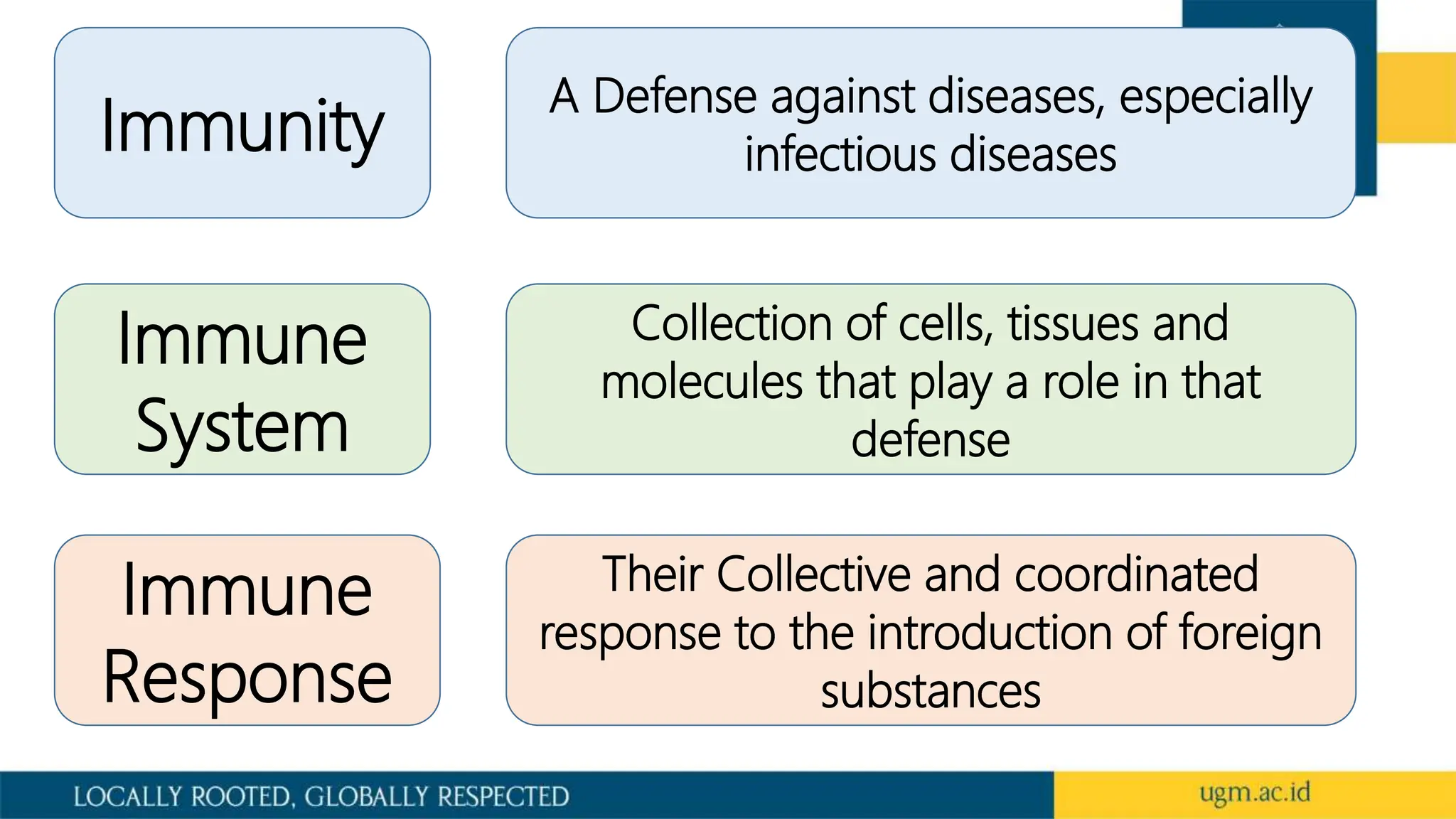This document summarizes innate immunity and its components. It discusses how the innate immune system provides early defense against microbes through physical barriers, pattern recognition receptors, and cellular responses. It describes the functions of epithelial barriers, phagocytes like macrophages and neutrophils, dendritic cells, cytokine-producing innate lymphoid cells, natural killer cells, and mast cells in innate immunity. It also explains how pattern recognition receptors like toll-like receptors recognize pathogens and activate inflammatory responses.































![5. STIMULATION OF ADAPTIVE IMMUNITY
• The innate immune response provides signals that function in
concert with antigen to stimulate the proliferation and
differentiation of antigen-specific T and B lymphocytes.
• two-signal hypothesis for lymphocyte activation : requires two distinct
signals 1. antigen; 2. molecules that are produced during innate
immune responses [include costimulators (for T cells), cytokines (for both
T and B cells), and complement breakdown products (for B cells)]
• IL-12 stimulates the differentiation of naive CD4+ T cells to the Th1 subset
of effector cells
• IL-1, IL-6, and IL-23 stimulate the differentiation of naive CD4+ T cells to
the Th17
• IL-25, IL-33, and TSLP stimulate the differentiation of naive CD4+ T cells
to the Th2
• IL-15 promotes the survival of memory CD8+ T cells.
• IL-6 promotes the production of antibodies by acti- vated B cells
• The second signals also influence the nature of the adaptive
respon](https://image.slidesharecdn.com/ilmiahai-anka-innateimmunity-231118022816-c7e075b2/75/INNATE-IMMUNITY-pptx-32-2048.jpg)






